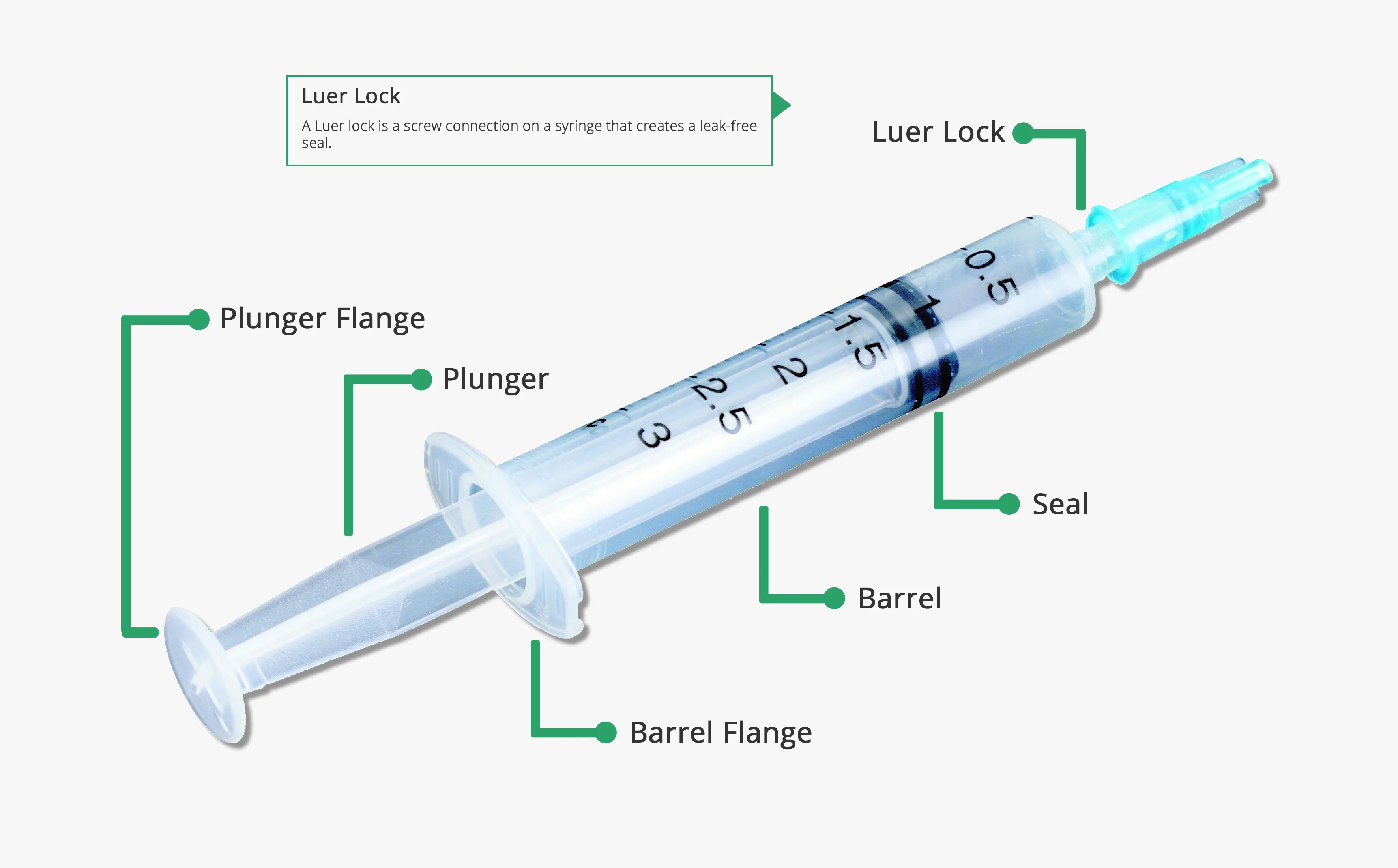Understanding Syringe Anatomy Diagrams Clearly
A syringe is a crucial medical tool used for injecting medications. Understanding a syringe diagram helps us better comprehend its functionality and safety. In this article, we will delve into the various components of a syringe and their roles.

Main Components of a Syringe
The primary parts of a syringe include:
Barrel: This is the main part of the syringe where the medication or liquid is stored. It is typically made of plastic or glass.
Plunger (Piston): Located inside the barrel, the plunger is used to push the medication out during injection. It is usually made of rubber or plastic.
Needle: Attached to the front of the syringe, the needle is used to administer the medication into the body. Needles are typically made of stainless steel.
Needle Cap: This covers the needle and protects it. It is removed before use.
Syringe Operation
When using a syringe, the medication is first filled into the barrel. Then, the plunger is slowly pushed down to inject the medication through the needle into the body. This process should be carried out with great care to avoid any accidents.
Benefits of Using a Syringe
There are several benefits to using a syringe. It allows for precise and rapid administration of medication into the body. Additionally, syringes enable accurate dosing of medications, which is crucial in medical treatment.
Safety Considerations for Syringe Use
Safety considerations are paramount when using a syringe. Each syringe should be used only once and disposed of properly after use. It is also essential to clean your hands before handling a syringe and ensure the syringe is properly cleaned.
Understanding the anatomy of a syringe helps us better appreciate its use and ensures safe handling. By being aware of the components and their functions, we can avoid potential hazards and use syringes effectively. Always exercise caution when using a syringe to prevent accidents.
